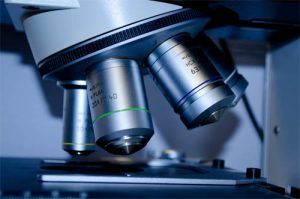
Foto: Pixabay.
This event is supported by Comissão de Cultura e Extensão, Faculdade de Saúde Pública, USP, and Departamento de Epidemiologia, Faculdade de Saúde Pública, USP.
The relationship between natural habitat fragmentation, land use and increase in vector-borne diseases occurs primarily because the best mosquito vector for certain pathogen is usually a resilient species that reaches high abundance in degraded habitats, such as forest fragments. In relation to mosquito-borne diseases, deforestation reduces the diversity of mosquito species and the one that becomes more abundant and dominant is usually the most effective vector. The primary mosquito vector of human Plasmodium in Neotropical Region is Nyssorhynchus darlingi. This species is dominant and more abundant in forest landscapes that have been altered by human activities in certain degree, becoming less abundant in areas that have been severely transformed.
The dynamics of the human Plasmodium transmission is tailored by complex interconnections of socio-ecological determinants. They include factors of biology of parasites, ecology and behavior of mosquito vector species, climate and environment and human behavior. As such, the epidemiology of malaria is characterized by a non-linear behavior of its determinants, and thus any intervention to control malaria should not be focused on one of its components only or the program will not be effective.
Considering the complex interconnections of multiple determinants, it is not surprisingly that despite the enormous effort and money spent to control malaria, the maintenance of the success is constantly challenged by reemergence of cases in an area where the disease has been controlled or eliminated, or emergence of infection in non-endemic areas. An argument that derives from the proposal for a better vector control is regarding the identification of human populations that are at risk of having malaria and then define the most effective methods to protect them from mosquito bites. Insecticide-treated nets (LLINs) and indoor residual spraying (IRS) are the most commonly used methods to protect humans when they are sleeping or resting inside houses. However, these technologies are not effective enough to protect all individuals from malaria because vector mosquitoes exhibit distinct behaviors and peaking time that limit the impact of LLINs/IRS. In these circumstances, it is crucial to adopt personal control methods such as repellents, insecticide-treated clothes and other malaria commodities as well.
Currently, it is largely accepted that when targeting reducing or eliminating malaria transmission, it is crucial to take into consideration the complexity of interactions among several factors of ecology of mosquito vectors, human behavior and life style, biology of the parasites, climate and environment. In addition, some factors that are currently getting more attention, for example, the biological system and evolution of Plasmodium transmission from humans to mosquitoes need to be taken into consideration.
In her talk, Jan Conn will speak about the new findings regarding epidemiology of malaria in areas in the Amazon Forest and the urgent need for further investigation in order to reach the targets of WHO Global technical strategy for malaria 2016-2030.
The event will be in English. Participants can make questions in English, Portuguese, French or Spanish.
Palestrante: Profa. Jan Evelyn Conn – School of Public Health, University of Albany, USA
Data: 13/12/2018, das 14h00 às18h00.
Idioma da Palestra: Inglês
Período de inscrição online: de 10/12/2018 a 12/12/2018
Local: FSP/USP – Av. Dr. Arnaldo, 715 – Sala Diógenes Augusto Certain – Prédio Principal – Térreo.
- Faça aqui, a sua inscrição:
A FSP USP não disponibiliza estacionamento aos participantes.
Texto: Profa. Dra. Maria Anice Sallum, via CCEx./FSP/USP.